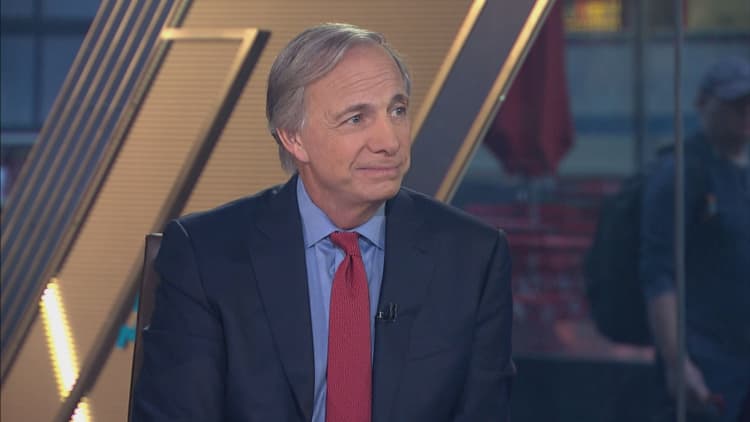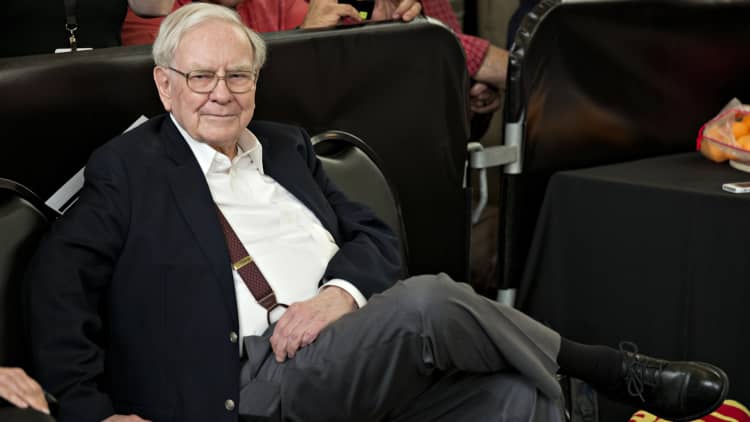In the summer of 2007, the U.S. financial system began to show cracks.
The number of homeowners with weak credit who were delinquent or in foreclosure on their mortgages ticked upward that June, as the national average interest rate for a 30-year mortgage rose to 6.74 percent.
Later that month, the Federal Reserve released a statement on subprime mortgage lending practices, warning that "consumers may not fully understand the risks and consequences" of loans with adjustable rates, which started out with low interest payments but quickly became more expensive as interest rates rose.
On July 17, 2007, investment bank Bear Stearns revealed that two of its hedge funds, which held significant investments in subprime mortgages, had "very little value" left.
By August, the billionaire founder of hedge fund Bridgewater Associates, Ray Dalio, realized the U.S. was in a dire situation. So bad in fact, he sent out a memo to clients and policy makers on August 10, 2007 titled, "This is the Big One."
"That was when it really dawned on me," Dalio tells CNBC Make It. "We're going to be headed over a waterfall, and how do I handle that responsibly?"
Just over a year later, on Sept. 15, 2008, investment bank Lehman Brothers filed for bankruptcy protection, an inflection point in the worst economic downturn since the Great Depression. Saturday marks the event's 10th anniversary.
Dalio's memo, along with Bridgewater's in depth analysis of how the recession unfurled, is included in Dalio's new book, "A Template for Understanding Big Debt Crises." The book is available for free in a PDF version, or readers can buy a Kindle version through Amazon. Bridgewater Associates is the largest hedge fund in the world, with about $160 billion in assets.
In his 2007 memo, Dalio predicted the ripple effect that would grip banks and lenders across the country.
"This is the financial market unraveling that we've been expecting," Dalio wrote in his Aug. 10 note, published in the book. "This will run through the system with the speed of a hurricane (over the next four to six months), and it will leave weaker financial credits dead or damaged, and stronger financial credits in the catbird seat."
When he realized what was coming, Dalio's first reaction was to turn to the lessons of the past, he tells CNBC Make It.

"I studied history, and then I was every minute of every day connected and engaged and taking in information," Dalio remembers. "I immersed myself in studying the Great Depression period, the Weimar Republic period," the latter of which saw one of the worst cases of hyperinflation ever.
He was looking for patterns from the 1930s in the U.S. and 1920s in Germany that could explain what was taking place then, in 2007.
"What I learned early in my life was that the things that surprised me were the things that hadn't happened in my lifetime before but [had] happened many times before in history. So to understand how things really worked, I needed to understand how they all worked," he explains.
His research laid the groundwork for his new book. In it, Dalio examines all 48 of the major debt crisis around the globe in the last 100 years to create a template for how a crisis begins, ends and happens again.
It's a process you can use to make better decisions in any area of your life, Dalio says. The key is to realize that every decision you face has a precedent you can learn from, and analyzing those precedents will lead to better outcomes.
The strategy worked for Bridgewater Associates amid the crisis: The average hedge fund lost 19 percent in 2008, according to the Wall Street Journal, but Bridgewater's Pure Alpha fund showed a positive return.
"Everything happens over and over again, because of logical cause and effect relationships," Dalio says. "If you want to understand how something works, study them all to understand the cause-effect relationships that are both logical and apparent in patterns."
Don't miss: Billionaire investor Ray Dalio shares his No. 1 tip for new investors
Like this story? Subscribe to CNBC Make It on YouTube!



